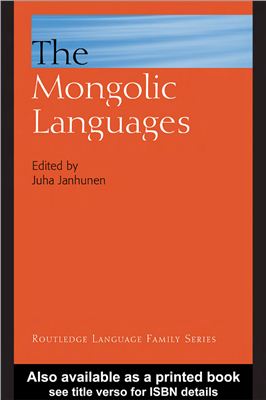Routledge, 2003. - 464 pages.
The Mongolic Languages form a linguistically well-defined but geographically widely-dispersed family of more than a dozen separate languages distributed from East and North Asia to Central and West Asia. It belongs to the trans-Eurasian belt of agglutinative and suffixing languages, but differences in the linguistic environment of the individual Mongolic languages have resulted in significant and typologically interesting variation involving both the phonological systems and the morphosyntactic pattes.
The Mongolic Languages form a linguistically well-defined but geographically widely-dispersed family of more than a dozen separate languages distributed from East and North Asia to Central and West Asia. It belongs to the trans-Eurasian belt of agglutinative and suffixing languages, but differences in the linguistic environment of the individual Mongolic languages have resulted in significant and typologically interesting variation involving both the phonological systems and the morphosyntactic pattes.

